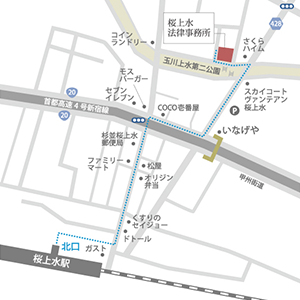Apache 2.0 Requirements
Snyk also provides information on license expiration dates and renewal applications, which can be complicated for large companies to manage. Streamlined license management allows developers to quickly build software while adhering to open source guidelines. In July 1999, Berkeley accepted the argument put forward by the Free Software Foundation and removed its advertising clause (clause 3) to form the new 3-clause BSD license. In 2000, Apache did the same, creating apache License 1.1, in which derivative products are no longer required to include attribution in their promotional material, but only in their documentation. Individual package packaging licensed in Version 1.1 may have used different wording due to different requirements for attribution or identification of the mark, but the binding terms were all the same. Even experienced open source software (OSS) developers and compliance experts can struggle to keep up with the many OSS licenses and their specific requirements. To help open source software developers and users navigate this delicate but important topic, let`s dive into the terms and use cases of some well-known licensing options. The Free Software Foundation considers all versions of the Apache license to be incompatible with previous versions of GPL 1 and 2. [4] In addition, it considers that Apache license versions prior to version 2.0 are incompatible with GPLv3. Because of the patent licensing requirements of version 2.0, the Free Software Foundation recommends it over other non-copyleft licenses. [9] [4] Copyleft licenses require that derivative works or modified versions of existing software be released under the same license. The Apache license has no such requirements. It is a permissive license.
It allows you to publish the modified parts of the code under a license of your choice. However, you must publish all unmodified portions of the Software under the same license (the Apache License). There are many types of software licenses, but all of them are legally binding. A software license contains rules and requirements on how users can use that software. It also determines how the fees for using the software are set and how much the user is allowed to modify, copy or distribute the software. Every company uses software to manage business processes, communicate with employees, customers and suppliers, and for countless other purposes. In most cases, software products require activation of licenses or acceptance of “Terms and Conditions” before programs can be downloaded, installed, or accessed. There are many types of software licenses with terms, support agreements, and restrictions. The GNU Affero General Public License (AGPL) is a version of GPLv3 created by the Free Software Foundation (FSF) that aims to enforce full copyleft rights on all software it uses.
This is in direct contrast to the permissive approach with the Apache and MIT licenses, which favor the modification and redistribution of open source software for any use, including proprietary purposes. The main thing is that each license has its own advantages and disadvantages, so there is no definitive answer to which is the best. The objectives of the specific development project under construction can determine this choice on a case-by-case basis. If you redistribute software with Apache-licensed components, you must attach a copy of the license, specify a single Apache license mapping, and add change notices to any files you modify. The Apache License is an open source software license published by the Apache Software Foundation (ASF). It is a popular and widely used license that is supported by a strong community. The Apache License allows you to freely use, modify, and distribute any Apache Licensed Product. However, you must follow the terms of the Apache license. Unless expressly stated otherwise, all Submissions submitted by a Licensee to a Licensor are subject to the terms of the License without any conditions, but this does not exclude separate agreements with Licensor with respect to such Contributions. Here`s a bit of an interesting story: An earlier version of the Apache license (Apache license version 1.1) was virtually identical to the BSD license. However, in 2004, the current version 2.0 was released, with two important additions: the explicit grant of patent rights and clear definitions of each term (“work”, “contributor”, “licensor”, etc.).
The resulting license leaves less room for ambiguity than the MIT and BSD licenses. One of the advantages of Apache 2.0 licenses over MIT licenses is that developers can claim patents on derivative projects. The wording that allows for the transfer of patent rights clearly spells out the terms that some users – and lawyers – appreciate, as the degree of legal protection offered minimizes the risk of potential lawsuits. If a NOTICE text file is included as part of the distribution of the original work, derivative works must include a legible copy of those notices in a NOTICE text file distributed as part of the derivative works, in the source form or documentation, or in an advertisement generated by the derivative works (wherever such third-party notices normally appear). Another great incentive is the clear granting of patent rights, which gives users a sense of security and comfort. The license is also supported by the reputable Apache Software Foundation. The name alone gives security to potential users, and the popularity of the license means that your target audience probably already understands and trusts the protection it provides. Finally, the well-defined terms of the license specify exactly what you can and cannot do with the software and promote trust and clarity for users. The GNU GPL is a copyleft license. Software that uses a GPL-licensed component must therefore release its full source code and all rights to modify and distribute all code. The Apache 2.0 license does not impose such conditions.
You do not have to publish your modified version. You can also release your modified version under a different license (but you must keep the Apache license for unchanged parts of the code). The Apache group (later called apache Software Foundation) released the first version of its license in 1995, but it`s rare that you come across components that still carry this license. Apache License 2.0 is compatible with GPLv3, so you can freely mix the code released under these two licenses. However, the resulting software must be released under gpLv3. You may choose to release modified or derivative products under different licenses, but the unmodified portions of the software must retain the Apache license and you may not name your modified version to indicate that the final product is supported or created by ASF. Yes. You can sell any software/code under the Apache license. As of October 2012, 8,708 projects were available in SourceForge.net under the terms of the Apache license. [10] In a May 2008 blog post, Google mentioned that more than 25% of the nearly 100,000 projects hosted on Google Code at the time used the Apache license,[11] including the Android operating system.
[12] With the exception of proprietary software, these types of licenses are called free software. Developers use countless open source software to create new projects. It is important to ensure that the new project does not violate any of the limitations described in each component.



